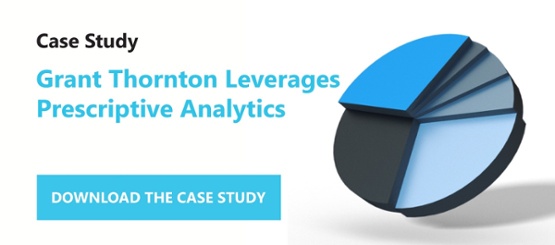This is my first week at River Logic, the leading provider of Prescriptive Analytics software. I am spearheading Product Management for the Integrated Business Planning solution at the company. Many of you may know me from my years evangelizing for and building Sales and Operations Planning solutions.
A decade ago, I started talking about IBP as an advanced form of S&OP at the Aberdeen Group where I was a Principal Analyst. The concept caught on so much that everyone started positioning their traditional supply chain planning software as IBP. Unfortunately, there is a significant level of confusion in the market about S&OP, SIOP, IBP, S&OM and myriad other acronyms.
I would like to share some of the facts I have realized over the years about this space with you and which will also describe why I joined River Logic.
IBP is not just about the supply-chain; it’s about the business
All the functions in a company are usually aimed at a single goal – to make more money by selling more products at a higher price than what the products cost. However, this goal is often forgotten because the way they operate is so myopic and siloed.
Each portion of the business has its own metrics and, all too often, narrowly pursues them to the detriment of the company. Supply chain strives for increasing demand forecast accuracy or reducing lead-times. Manufacturing aims to maximize its capacity utilization. Procurement wants to reduce the cost of raw materials.
Integrated Business Planning is all about integrating plans across different functions and re-aligning them towards the corporate financial goals of the company: to gain additional net income and increase net sales.
For example, S&OP is a specific example of Integrated Business Planning wherein the demand planning organization comes up with the demand plan and the supply planning organization tries to meet the demand based on available materials/capacity. Traditional S&OP has been highly sequential and not really integrated well with the financial planning and budgeting process. The reason for this is that traditional supply chain software was built from the ground up with a data model that is very myopic towards certain areas like demand, supply, logistics, etc. On the other hand, FP&A tools model the GL/Chart of accounts fairly well from a transactional and a roll up perspective.
River Logic, however, is very unique. It fundamentally looks at the problem through the lens of the CEO/CFO: charts of financial accounts and net income and a focus on the value chain. In other words, it truly has an integrated business plan as part of its data model in terms of finance, supply, demand and any value chain function that needs to be modeled. It is a comprehensive business modeling tool and not just a supply-chain modeling tool.
Optimization is back, prescriptive analytics is the key
There has been a tendency in recent years by certain vendors to de-emphasize optimization and to talk about "response management." The reasons that have been quoted for this are: the optimization solutions are too complex, they require coding, they are not modern, they are hard to visualize, the data for these solutions are hard to create and manage, etc.
But there is a significant opportunity for a full stack prescriptive analytics solution to resolve the challenges outlined above. River Logic is on its way to do this and I am excited to be part of this journey.
Flexibility is important, Value Chains are evolving rapidly
Be it in the health care value chain, where cost pressures and government regulations are finally compelling providers to focus on analytics and process improvements, or the Oil and Gas industry as it reels under the dramatically dropping oil prices, the only constant is change.
An Integrated Business Planning solution at a very high level of abstraction cannot claim to solve industry problems. It has to be detailed, and more importantly, it should be flexible. The constant pace of business change has resulted in the need for highly configurable IBP solutions that can do ad-hoc What-if-Analysis.
Due to the limitations of a heuristic or business rule driven approach, scenario management tools in the industry do not really allow the possibility of doing ad-hoc What if Analysis. These tools also do not model the business at the granularity needed to truly solve the problem.
River Logic, being a prescriptive analytics solution, resolves these challenges.
Gartner has identified Prescriptive Analytics as the next frontier of business planning and I am very excited to be part of this disruptive technology.







